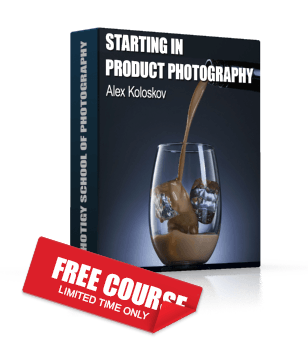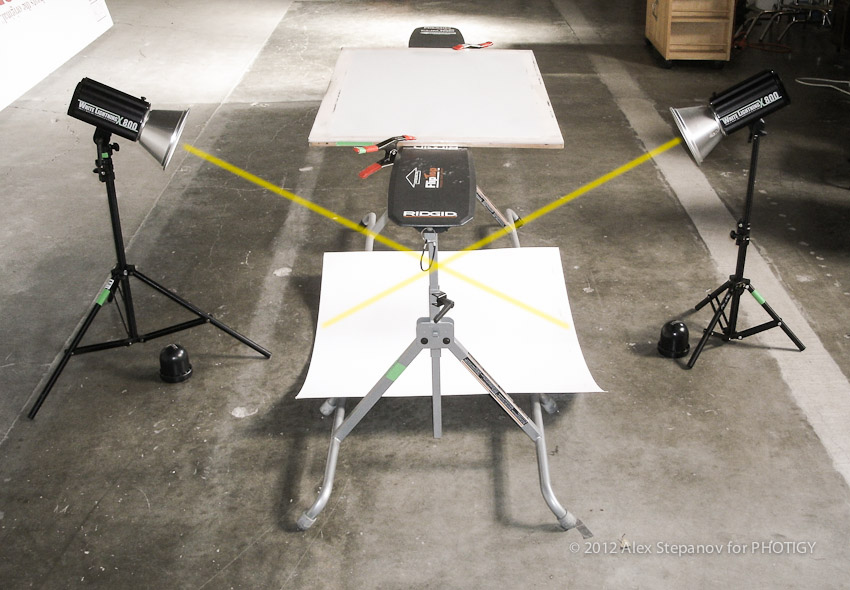Lightbox setup “on the go”
Studio Photography
Setting things up
Every now and then, I get to shoot a translucent (or somewhat translucent) object that looks a lot better with the light shining through it – be it a fragrance bottle, slice of food or just some autumn leaves. Here I would like to share a quick and easy setup for this kind of shoots – I learned it from David Turner and did some minor tweaking to it to make it more “portable”. I like this setup because it is very simple and forgiving, does not require a lot of precise measuring and is literally “foolproof”.
Our objective is to get the light to shine through the shooting surface (and the object placed on it) into the lens and to make sure it does not cause lens glare and is as even across the field as possible. The trick is to use bounced light (portrait people often call this technique “skipping” or “skip”) – instead of turning the lights towards the camera, we turn them towards some reflective surface and use the bounce as the main light source.
These are the steps to set it up:
Find a large enough reflective surface – it could be a piece of white fabric, white cardboard or foamcore (this is what I like to use) or anything that is large enough and bright enough to reflect the light. Avoid shiny surfaces – we are looking for soft, diffused light
Set up two lights – one on each side of the surface at about the same distance from it and at about the same height on the stand. Point the lights “criss-cross” (as pictured) so that each light points roughly to the opposite edge of the shooting area. This will allow us to avoid the “hot spot” in the center and make the illumination more even across the field. Put the lights at the same power level setting
Take a light reading in the center and closer to one of the corners – if the difference is more than 1/2 stop then it is likely that the lights are too close – pull the lights back a bit, readjust and take another reading.
And that’s really all there is to it – enjoy your shoot!
Below is a quick illustration of the complete setup. The whole setup could be easily done in about ten minutes flat and broken down in about the same period of time.
As to the shooting surface (the whitish bulky thing clamped to the horses), in this particular instance I used my old trusty scrim, which is basically a sheet of mylar taped to a 24×36 canvas stretcher (that’s why it looks so square). A scrim is a very versatile and handy tool all around the studio and using it as a shooting surface has the added benefit of further softening the light (please keep in mind that it will cut the light by about 1/2 stop at least). If you don’t have a scrim or prefer to have a completely hard and stable surface (for heavier bottles), then a sheet of plexiglass will work as well (1/8″ works fine for the smaller objects, 1/4″ is usually enough for the larger ones).
So lay the object on top of the surface and let the light shine through it! Happy shooting and remember – never stop experimenting!
Technical information
Camera: Canon 5D Mk II
Lens: Canon 50mm 1:2.5 Compact Macro
Cheers,
Alex Stepanov, Photographer.
www.astepanov.com



 Only for Pro Club Members
Only for Pro Club Members
Hi
I find your drawing confusing as you have two items called rigid. What are they?
Also where is the product and where is the camera?
The product looks awesome.
How did it look before retouching please?
Hello there, I do agree with Elizabeth and would like more explanations about this project as I also think it’s not clear enough. Thank you. Also link to David Turner is broken.